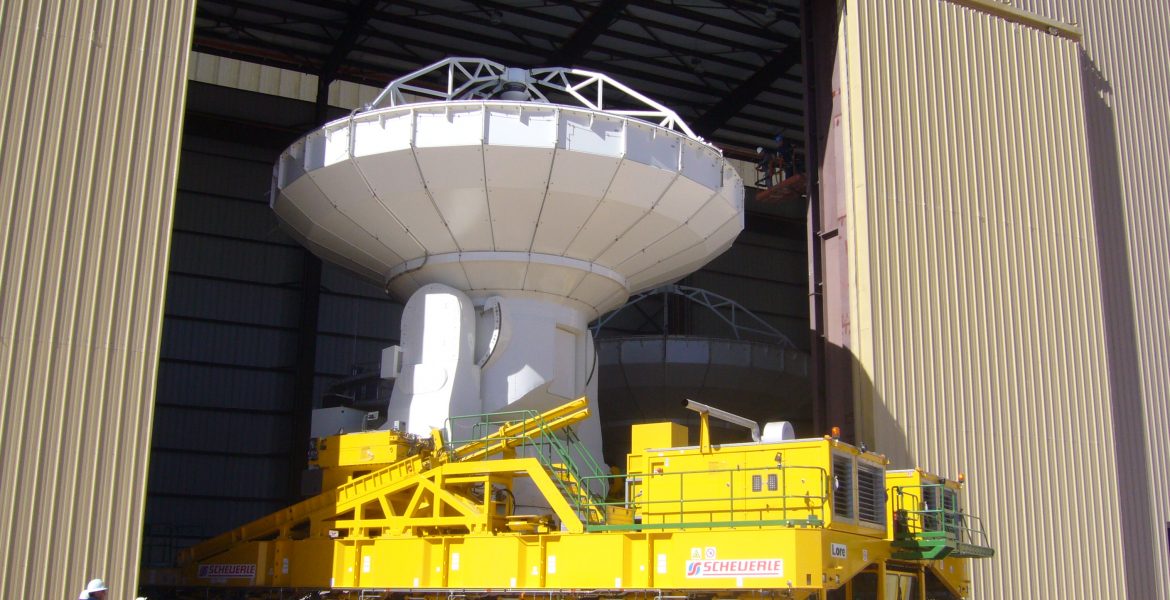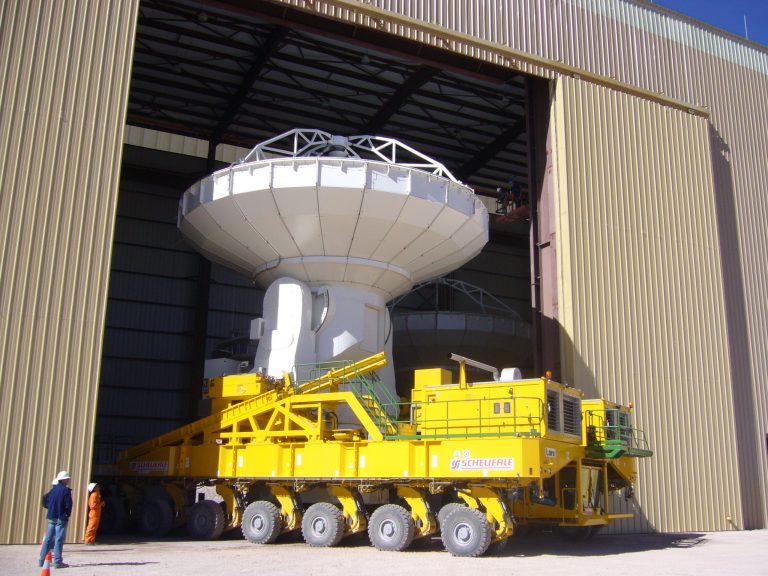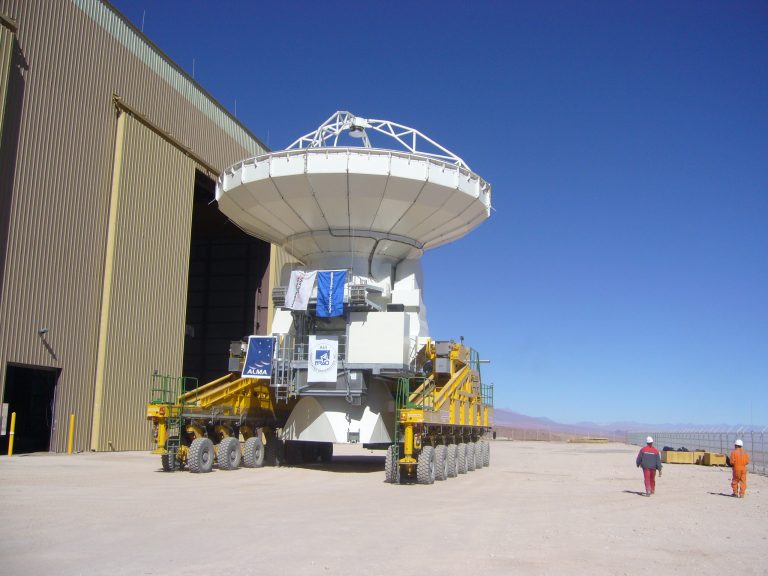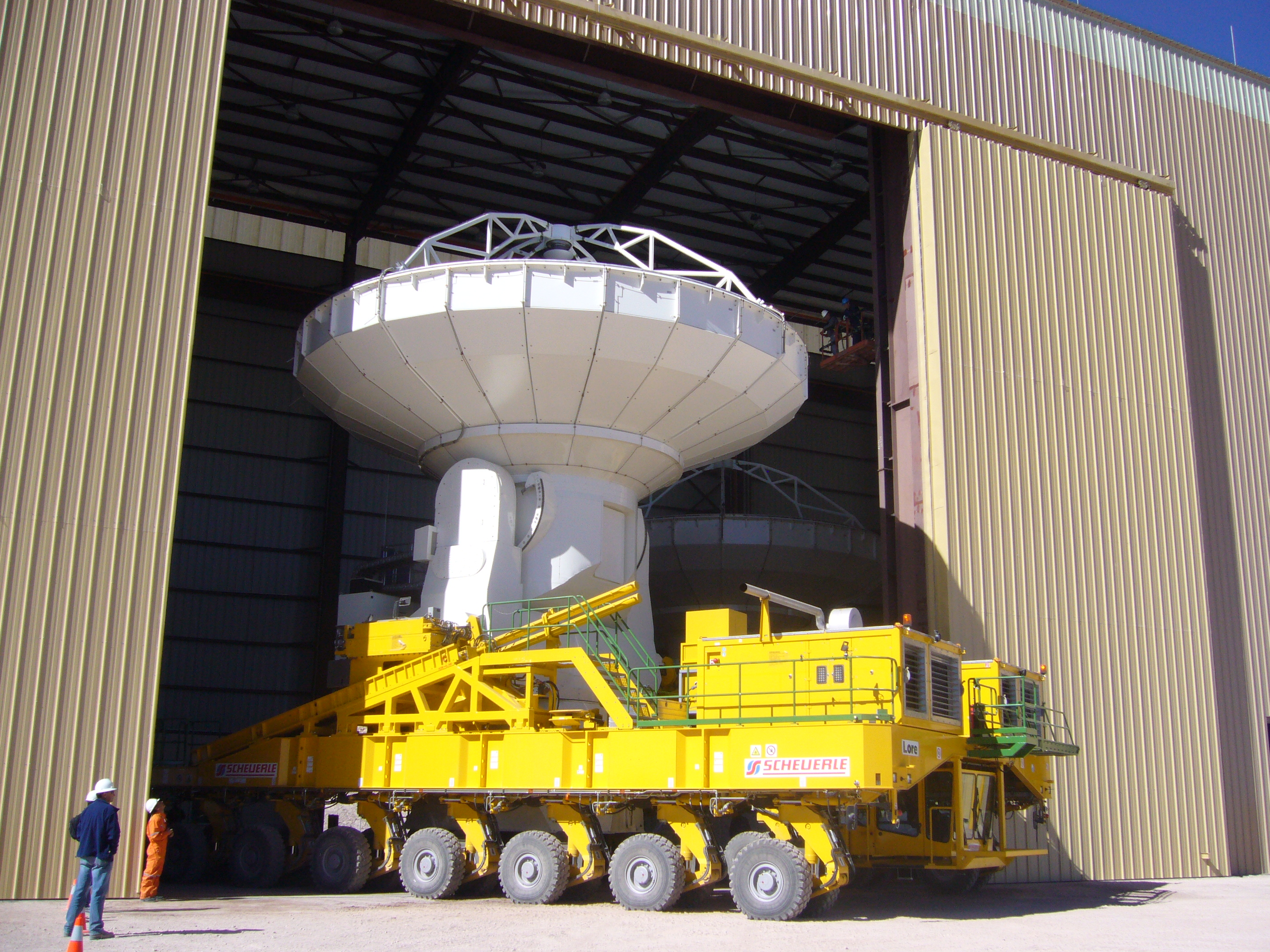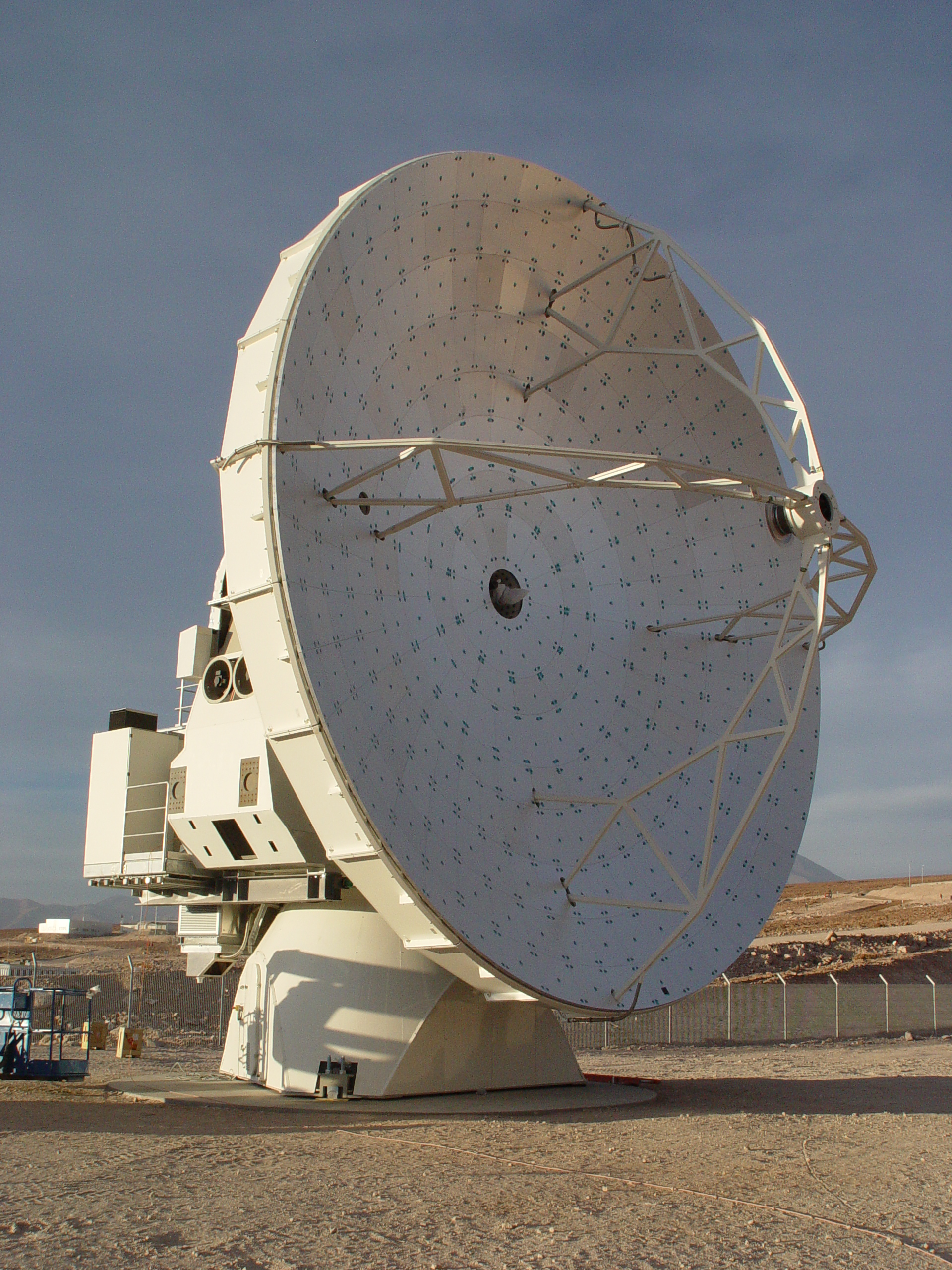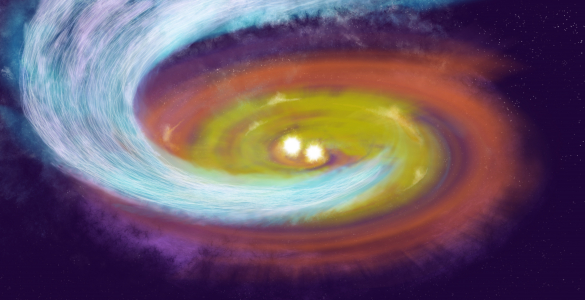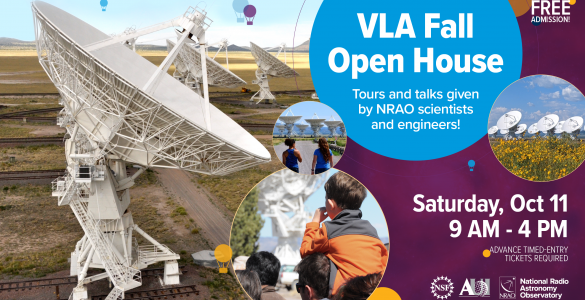Astronomers celebrated today the formal acceptance of the first North American antenna by the Joint ALMA Observatory. ALMA, the Atacama Large Millimeter/submillimeter Array, is a gathering armada of short-wavelength radio telescopes whose combined power will enable astronomers to probe with unprecedented sharpness phenomena and regions that are beyond the reach of visible-light telescopes. The observatory is being assembled high in the Chilean Andes by a global partnership.
The 12-meter-diameter antenna delivered today is the first of twenty-five being provided by North America’s ALMA partners, whose efforts are led by the National Radio Astronomy Observatory (NRAO) and supported by the U.S. National Science Foundation (NSF) in cooperation with the National Research Council of Canada and the National Science Council of Taiwan. The antenna was manufactured by General Dynamics SATCOM Technologies.
The acceptance comes just weeks after the first ALMA antenna, produced under the direction of the National Astronomical Observatory of Japan on behalf of ALMA’s East Asian partners, was handed over to the observatory.
“These ALMA antennas are technological marvels,” said Thijs de Graauw, ALMA Director. “They are more precise and more capable than any ever made. Their performance in the harsh winds and temperatures of our high-altitude site bodes well for the observatory’s future.”
A single 12-meter antenna’s dish is bigger than the largest optical telescope’s reflective mirror, but to match the sharpness achieved by an optical telescope, a millimeter-wavelength dish would have to be impossibly large, miles across. ALMA will combine signals from dozens of antennas spread across miles of desert to synthesize the effective sharpness of such a single, gigantic antenna. The process involves analysis of the ways in which the signals coming from each antenna interfere with one another, and is called interferometry.
“This is a major milestone for the ALMA project. With two antennas now on site, we begin the real work of combining signals from them. We are advancing toward ALMA’s ultimate goal of surpassing by tenfold existing technology in this area,” explained Philip Puxley, the NSF’s ALMA Program Manager.
ALMA officials expect the pace of antenna acceptance to accelerate. “We have nine (North American) antennas on site already,” said Adrian Russell, NRAO’s ALMA Project Director, “and following handover of Number Three we plan to get one through the test procedure each month. Additional North American antennas will be arriving in Chile at a rate of one every two months, and General Dynamics is on track to complete delivery of these systems within days of the original schedule.”
When completed early next decade, ALMA will have a total of sixty-six antennas (with the option of further expansion) provided by partners in North America, Europe, and East Asia. The first European antennas, produced under the auspices of the European Organization for Astronomical Research in the Southern Hemisphere (ESO) are scheduled to begin arriving early this year.
The ALMA Project is a partnership between the scientific communities of East Asia, Europe and North America with Chile.
ALMA is funded in North America by the U.S. National Science Foundation in cooperation with the National Research Council of Canada and the National Science Council of Taiwan. ALMA construction and operations are led on behalf of North America by the National Radio Astronomy Observatory, which is operated under cooperative agreement by Associated Universities, Inc.
Notes for Editors
- ALMA will be the leading astronomical instrument for observing the cool Universe – the molecular gas and dust that constitute the building blocks of stars, planetary systems, galaxies, and of life itself.
- ALMA will operate at wavelengths of 0.3 to 9.6 mm. At these wavelengths, a high, dry site is needed for the telescope to be able to see through the Earth’s atmosphere. This is why ALMA is being built on the 5000 m high plateau of Chajnantor in the Atacama region of Chile. ALMA will offer unprecedented sensitivity and resolution. The 12-meter antennas will have reconfigurable baselines ranging from 15 m to 16 km. Resolutions as fine as 0.005 arcseconds will be achieved at the shortest wavelengths – a factor of ten better than the Hubble Space Telescope.
- ALMA’s antennas have surfaces accurate to less than the thickness of a human hair, and can be pointed precisely enough to pick out a golf ball at a distance of 15 km.






